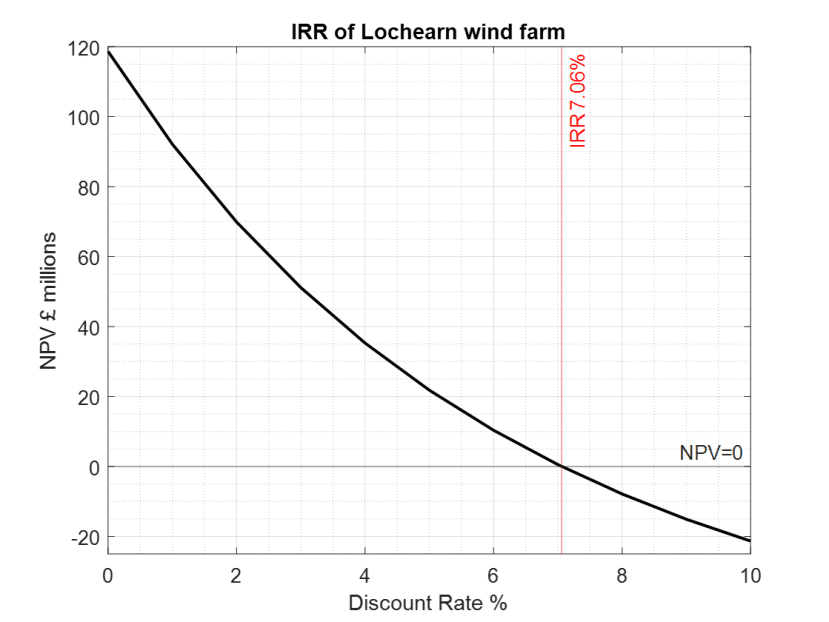ThreeStream : Equate Wind Energy Project 2023
Follow articleHow do you feel about this article? Help us to provide better content for you.
Thank you! Your feedback has been received.
There was a problem submitting your feedback, please try again later.
What do you think of this article?
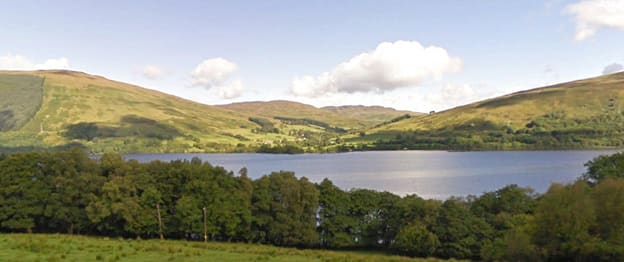
Our team (ThreeStream) took part in the FemEng / Strathclyde Equate Wind Energy Project 2023 to design an onshore windfarm on one of six potential sites in the UK.
Our team chose Site 6 north of Loch Earn, Stirlingshire, in the Scottish Highlands after ruling out the other sites. WAsP software was used for wind performance analysis for three different turbine classes and arrangements, the highest power output was found with twelve Class II turbines. These are positioned along the crest of the hill overlooking the village of Lochearnhead, and around the Allt laruinn tributary of Beich Burn which flows into Loch Earn.
Our priorities for this project are community engagement and environmental impact, working to provide cheaper clean electricity for local residents and being considerate of the nearby Loch Lomond and the Trossachs National Park.
Site selection is, unsurprisingly, one of the most important parts of this project. Given six possible locations, we had to narrow them down and reject five sites.
Initially one kilometre radii noise/shadow flicker buffer zones were drawn around properties on the six sites. Sites 4 and 1 were left with no practical space to build on. Additionally, site 4 is also at high risk of coastal flooding and is made up of arable farmland, and as such would not be suitable.
Site 5 in Wales has high wind speeds, which are desirable, however it is situated on an active military area used for live training and artillery, which would require authorisation for site access. This site is thus also rejected.
This left us with three sites, sites 2 (Greenock), 3 (Braes of Doune), and 6 (Lochearnhead). With the aforementioned buffers site 2 had some construction space, but also contained a neighbouring windfarm which would require further buffers and would affect our capacity factor. Site 2 is also nearby to Glasgow airport, water reservoirs, and had lower average wind speeds. Site 2 is the most accessible of all sites. Despite this, we rejected site 2.
Sites 3 and 6 are similar in topography and accessibility, both with high average wind speeds. Of the two, site 6 has the least amount of peat on the surface whereas site 3 is almost entirely covered in peatland. With this we rejected site 3, leaving us with site 6 by Lochearnhead.
The chosen site
This site is made up of steep terrain, mostly gravel and schist bedrock, with some areas of peat. The steep terrain makes the wind conditions more favourable for turbines.
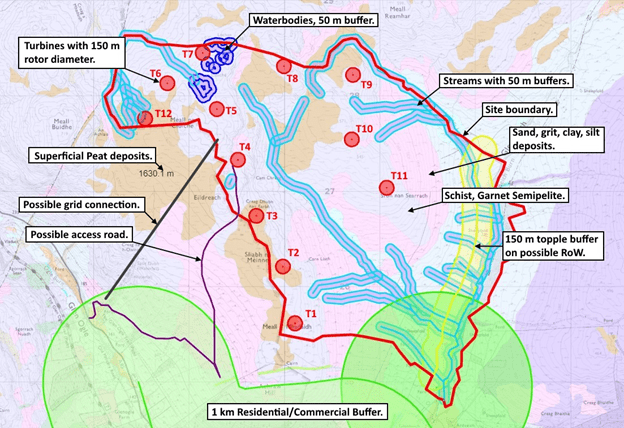
Turbine components would likely be manufactured abroad so would be shipped to the UK. Site 6 can be easily accessed via main roads from either Glasgow or Edinburgh ports, with the A84/A85 running to within a kilometre of the site. Major transport will be kept to these main roads and further consultation with Transport Scotland and Stirling Council will minimise disruption to locals. Abnormal loads such as turbine blades and tower sections will be transported at night, with advanced warning for residents.
A pre-existing access road to the west of the site will be upgraded to connect the A85 to the windfarm. This would also allow for innovation in grid connection, as there is an existing pylon supported powerline connection from the St Fillians hydroelectric power station that passes en route to the Killin substation. We expect to connect to this power line as it passes, cutting down our connection costs from at least £4.6 million “as-the-crow-flies” to £1.5 million, including upgrades to the existing connection. This also reduces the environmental and visual impact of the project with our grid connection completely bypassing Lochearnhead. We expect permissions to be easier to obtain, given that there is already a power line in place.
Buffers for water bodies, possible Rights of Way (RoW), and residential areas have been considered. To minimise the impacts of noise and shadow flicker on residential properties, a one kilometre buffer is measured from residential properties. Around water bodies a fifty metre buffer is put in place. There is what appears to be a possible RoW in the eastern valley, this is given a one hundred and fifty metre buffer. Due to the steep nature of much of the site’s terrain, the possible RoW and residential buffer are not infringed upon. The water buffers are important only for the turbine mast, where the blades are allowed to pass through the “airspace” above.
The site contains several small streams, some of these may need to be rerouted during construction and after construction to ensure that the site has enough drainage to prevent waterlogging.
Environmental Considerations
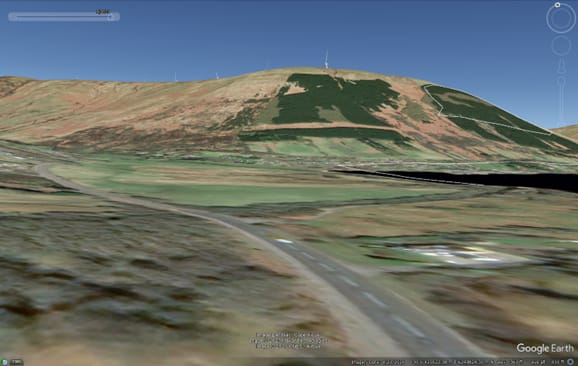
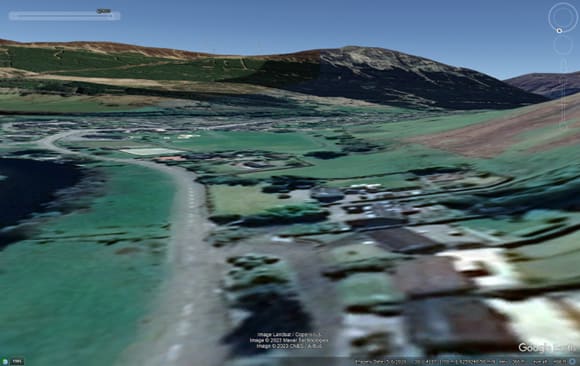
As it is near Loch Earn and on the border of the Loch Lomond and Trossachs National Park great care will need to be taken to prevent any ecological contamination or disturbance, as well as reducing the visual change for stakeholders. The terrain would allow for the windfarm to be almost completely hidden from the nearby settlements of Lochearnhead. This also helps reduce the impact of shadow flicker.
With regards to noise, any airborne noise from the turbines will be carried away towards the northeast and east by the prevailing winds, away from Lochearnhead. Low frequency noise may travel through the ground and be audible in Lochearnhead. This low frequency noise is unlikely to be more than five decibels higher than the noise from traffic on the A84/A85 roads.
During the design phase, avian and wildlife surveys will be carried out to allow for any collision modelling that needs to be conducted. From our initial research there are no bird migrations or Important Bird Areas across the site. An Ecological Clerk of Works would be brought in to monitor construction and ensure minimal impact is made on the site.
The Site of Special Scientific Interest (SSSI), Dalveich Meadow, near to the project is one of the “largest areas of unimproved grassland habitat in the Stirling Council Area”. The SSSI condition is currently classed as Unfavourable Declining due to invasive bracken, which is very difficult to get rid of. Currently a grazing regime is being used to improve conditions, but this is inefficient and allows for regrowth. Additional funds of £5,000 will be contributed per year towards the improvement of the meadow, as part of the project’s engagement with the local area.
Four turbines (T1, T2, T3 and T12) sit on potential peatland, which could be excavated and reused either elsewhere onsite or reinstated in its original position after construction. The carbon content would be protected by reinstating the peat only in areas where it can be adequately supported. Ground surveys would be required in the development phases to accurately map where the peat must be excavated and where it can be reinstated. If unfortunately, the ground surveys result in deep peat (greater than half a metre depth), this would count as a waste product and have to be properly disposed. Further investigation and communication with SEPA would be required for this issue.
During construction, cut off drains would be required at the top side of excavations. This is to prevent surface run-off into any excavations that could lead to issues with water pollution. Any water that collects at the bottom of excavations would be pumped and treated to be released back into the water system, however, the aim will be to divert water towards the existing burns that feed into Loch Earn without affecting the water quality.
Community
Our business model is sustainable as the local community is our highest priority. The project’s Community Engagement Plan includes providing reduced electricity tariffs for local residents, a Community Benefit Fund, an additional SSSI Improvement Fund, and targets to award contracts to local businesses where possible.
According to the Scot Census 2011, a large number of the community already use electric central heating. An electrical energy tariff reduction of 5 pence per kWh would make a big impact by reducing the price of heating.
The community will have access to the latest updates of the development of the project and be able to flag any concerns via several portals. Discussions would be during quarterly meetings during planning, development, and construction with representatives from the design team, hosted in the Village Hall. Annual meetings would be hosted after commissioning until the fourth year of operation where teething issues are expected to be solved. Information will be posted physically in the Village Hall and online on a project website throughout the project, with email and postal addresses for the project team, even after the final meeting.
The Community Benefit Fund of £340,000 per year would be used towards improvements for the village of Lochearnhead and surrounding area. Improvements would include road maintenance, apprenticeships (where not funded by the government) and installing electric car chargers. The Maintenance Technician Apprenticeship would be specifically available to aid retention and further education of local young people and provide a secure career maintaining the windfarm’s operations for its service life. Use of the Community Benefit Fund will be led by the community to ensure the money is used in the most efficient way.
One of the community concerns is that a windfarm will have a negative audio-visual impact on the beauty of the landscape. During the design phase, a conscious effort was made to minimise these as much as possible. In the final design, the windfarm is almost entirely hidden from Lochearnhead and the National Park. Buffer zones were put into place for shadow flicker and noise, which dwellings are well outside of. The single walking trail on site would be temporarily closed during construction but will re-open when safe to do so. The path will be maintained as part of site upkeep. It would be accessible to local walkers in line with the Right to Roam, with safety warnings and information posted where needed.
The windfarm would be visible from the south shore of Loch Earn, but there is strong evidence that wind turbines can become an attraction in themselves through ecotourism. This would provide further employment for local people year round and allow anyone to enjoy the impressive and elegant magnitude of the windfarm in harmony with the landscape.
There is potential for an educational centre to be added to the windfarm. This would be used for school visits, industrial CPD courses, and tourist tours, as well as a social function space. A centre is outside the scope of this project but could be partially funded by the Community Benefit Fund.
A proximity detection system for overpassing aircraft can be used to only turn on aviation warning lights when an aircraft is nearby. This would reduce the visual disturbance of these lights for local wildlife and residents at night. We were unfortunately unable to cost this, and as such have not included it in our financial plan.
Technical
We first analysed the wind speeds across the site. The site already has a higher average wind speed compared to other sites, however, due to the nature of the steep terrain much of site cannot be built on. The areas suitable for building are the crests of the hills within our site. Average wind speeds of between 9 m/s and 11 m/s are available at 110 m above the crests.
For turbine options, we were given three different classes to choose from, each rated for a wind speed. The highest average wind speed class available is a Class II turbine with a 110 metre nacelle height and 150 metre rotor diameter. This turbine is rated for 8.5 m/s average and above, making it the most suitable choice for our site. Conveniently this is also the highest power wind turbine available, with a rated power of 5.6 MW.
Ideal turbine spacing can vary. We opted to space the turbines five rotor diameters apart rather than six recommended to us in the brief, to fit as many turbines into the site as possible. The reduced spacing will influence wake losses and may lead to additional loading on the turbine masts, which we plan on monitoring, so it does not negatively affect safety and performance.
Using WAsP, the windfarm was modelled and a report generated. This report estimates the expected performance of each individual turbine as well as the expected yearly generated power. Our site is expected to generate 327 GWh before wake losses and 313 GWh after losses. This is a loss of about 4.3% which we deem acceptable.
Before further losses are considered the site has an average capacity factor of 53.1%. This is the 35.7 MW theoretical energy generated compared to the 67.2 MW installed capacity. The power at export will be lower than this due to operational losses. These will include electro-mechanical losses along with planned curtailment due to environmental conditions, maintenance schedules, and icing. Availability of the site is planned to be 97% for the majority of the windfarm’s lifetime; in the first few years after construction we have set this to 95% to allow for teething issues to be resolved. Combined electrical and performance losses, such as due to icing, are set to 3% for most of the lifetime, increasing to 5% near the end of the expected 25 year lifetime as equipment degrades. Additional curtailment of 0.5% is added for possible bird migrations.
These losses are estimated, and actual values should be monitored during operation of the windfarm. There may also be more accurate time-based data available from similar windfarms, but this was not available to us.
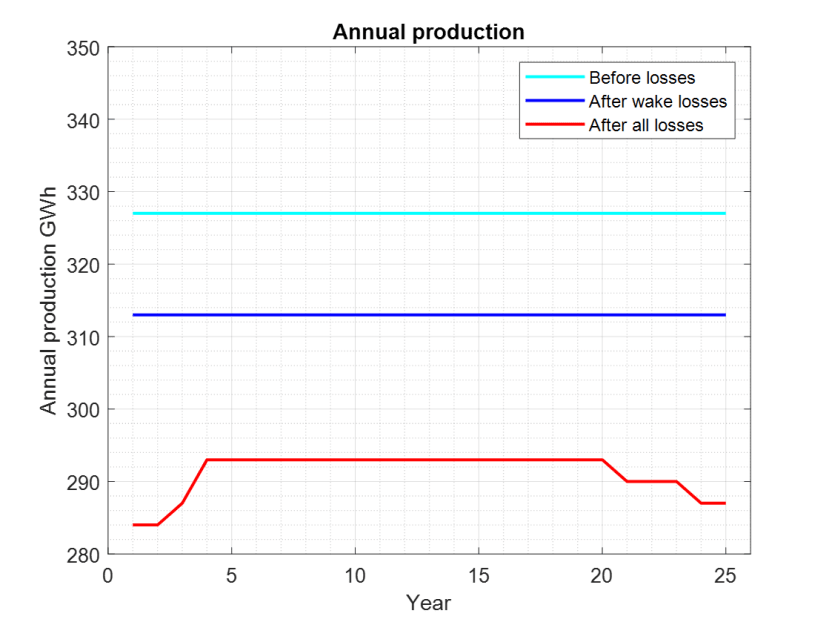
We looked at ways to store the electricity generated during low hours to then be sold at a greater profit later, and we quickly realised that pumped storage was not going to be an appropriate solution as there isn't enough space on site to build a reservoir and the discharge of water would impact the tourism activities in Loch Earn.
We also looked at ways of producing green hydrogen on site, but dismissed this idea as it would increase traffic on the road to export the hydrogen, negatively impacting the local community and would also have a high risk attached to it. Using green hydrogen to store electricity would not be feasible as it would require a sale price of £150/MWh to make a profit on the electricity stored by hydrogen.
Operations, maintenance, and decommissioning
Throughout the project’s operational life, it is crucial that the statutory requirements are met and that planned preventative maintenance is undertaken. Sensors on each turbine will monitor the condition of the turbine and the surrounding environment in real time to pre-empt faults, and routine annual inspections will verify the sensors and allow for component and oil changes to increase service life.
On average, the site experiences ice forming conditions 0.5% to 5% of the year, so it will likely have a minimal impact. This would be mitigated by an ice-phobic coating such as the product by Aerones, which would be applied during blade manufacture and reapplied as part of maintenance procedure.
For the end of life of the farm, we have three possible options: decommissioning, repowering and life extension.
Our ideal option would be life extension, as it has the lowest environmental impact, and can keep the farm running for an extra ten to fifteen years. This option is only possible if the productivity of the farm has not decreased significantly, and if major components are still economical to operate. The next best option will be to repower the farm. A plan for such a project will need to be put together closer to the date, as there may be changes in legislation and the community which cannot be predicted. It will be sensible to put some fraction of the yearly profit aside to fund this.
Finally, if the local community or the landlord don't want to keep the windfarm, we would need to decommission the farm. This option has the most environmental impact so we would try to avoid it. We would trace the materials and make sure that they are either disposed of, re-used, or recycled properly. We would also need to restore the site back to as close as it originally looked. This would involve monitoring the site and adding back local flora and soil deposits.
Finance
We expect the windfarm will cost £66.7 million to construct. This will be fully financed by a 3% interest construction loan, as we were unable to find any government grants or support that would part-finance the project.
Initial costs will include the purchase of turbines, and the construction of access roads and on-site infrastructure, as well as 12 kilometres of upgraded cabling for grid connection. Additionally, the first year includes a community engagement cost; in the years of operation there will be higher land rent, community compensation and energy subsidy but this will be covered by our energy export revenue.
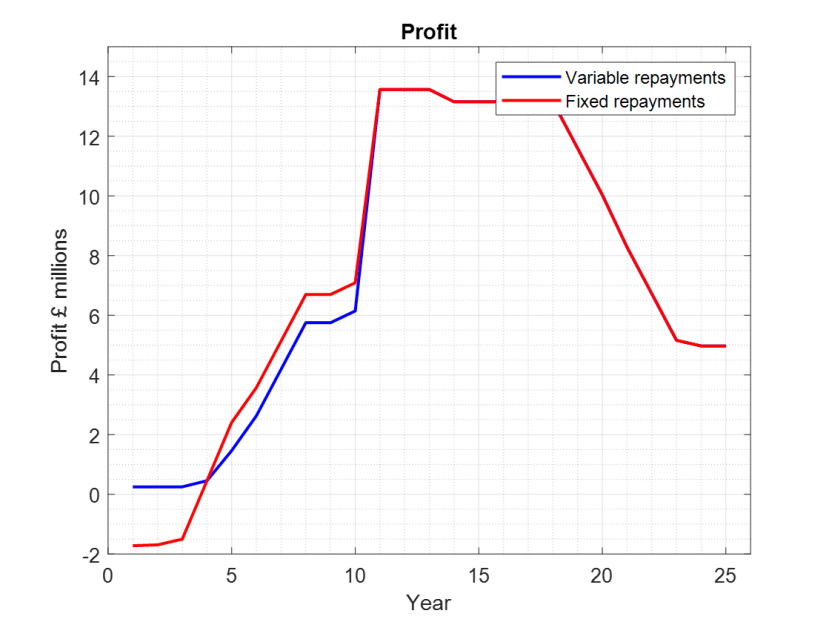
The Internal Rate of Return for this project is 7.06%, which is 0.4% larger than other onshore windfarms in Europe making the windfarm a viable investment. At the end of the 25 year service life, we expect the project to create £185 million total profit after all costs.
We chose to model maintenance costs on a curve, starting with 25% of purchase in the first three year of operation, then reducing gradually to 10% in the 8th year of operation. This is to allow for “ironing out” issues with turbines and equipment after construction. Towards the end of the expected 25 year lifetime the maintenance costs ramp back up to allow for increased maintenance as equipment ages.
The project will not only bring in a considerable profit to the company, but it will also benefit the local community with a Community Benefit Fund of £340,000 per year. It will also help the environment through the £5,000 SSSI Improvement Fund.
Additionally, we also intend to subsidise the electricity costs for residents within the post code areas of FK18 8, FK19 8, FK20 8, and FK21 8. These areas include the locations of Tyndrum, Crianlarich, Killin, and Lochearnhead. The intention is to provide an electricity subsidy of 5p/kWh for households, of which there are 923 in this location (Scot Census 2011). With a yearly typically household electricity use of 2900 kWh (Ofgem) this works out to just under £140k. Per household this represents a saving of around £150 per year. For our budget we have allocated £150k for this.
The main problem that might increase the costs of building the wind turbine is construction. This is why to remain on time and budget for the construction we plan on including a 4D digital construction model. This would also help us to visualise planning for earthworks such as peat removal and reinstatement, improving health and safety, and reducing vehicle and plant movements around the sensitive sites.
Summary
Following the research done by our team over the past fortnight, we believe that our project is a sustainable and feasible proposal for a profitable investment. We appreciate you taking that time to read our article!
Authors: Greta Harris, Kaspar Ambuehl, Santiago Rivero Fafian, Noha Elsayed, Paul Chijioke Ahannaya.


